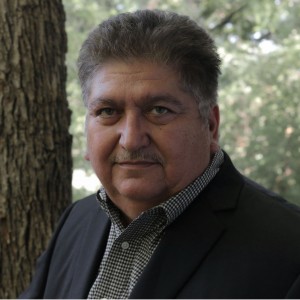Tags: Children of Giant, Earl Holliman, Edna Ferber, Elizabeth Taylor, Elsa Cardenas, feminism, George Stevens, GIANT, Indies, James Dean, latino issues, latino stories, LPB, Marfa, PBS, PBS SoCaL, Rock Hudson, Texas, voces, women's rights
 Premiering on PBS as part of the new season of VOCES on PBS, Hector Galan’s new documentary explores how the making of a classic Hollywood movie transformed the lives of the residents of a small Texas town. In 1955, Elizabeth Taylor, Rock Hudson, James Dean and a massive crew descended on the Texas town of Marfa to begin production on the classic film Giant. Based on Edna Ferber’s controversial novel, Giant took an unflinching look at feminism and class divisions and was one of the first films to explore the racial divide between Anglos and Mexican Americans in the Southwest. Now, 60 years later, Children of Giant returns to Marfa to explore the dramatic story behind the making of the film and its enduring legacy. The program combines interviews with the surviving cast and crew of Giant — including George Stevens, Jr., Earl Holliman and Elsa Cardenas — with the recollections of residents who participated in the production, many of whose lives mirrored the controversial themes of racism and segregation explored in the film.
Premiering on PBS as part of the new season of VOCES on PBS, Hector Galan’s new documentary explores how the making of a classic Hollywood movie transformed the lives of the residents of a small Texas town. In 1955, Elizabeth Taylor, Rock Hudson, James Dean and a massive crew descended on the Texas town of Marfa to begin production on the classic film Giant. Based on Edna Ferber’s controversial novel, Giant took an unflinching look at feminism and class divisions and was one of the first films to explore the racial divide between Anglos and Mexican Americans in the Southwest. Now, 60 years later, Children of Giant returns to Marfa to explore the dramatic story behind the making of the film and its enduring legacy. The program combines interviews with the surviving cast and crew of Giant — including George Stevens, Jr., Earl Holliman and Elsa Cardenas — with the recollections of residents who participated in the production, many of whose lives mirrored the controversial themes of racism and segregation explored in the film.
LPB caught up with award-winning producer/director Hector Galan and talked about the making of Children of Giant. Galan has produced over forty hours of programming for the national PBS television schedule including eleven episodes for the provocative series FRONTLINE, two programs for the PBS series The American Experience, and the landmark four-part PBS series, Chicano! History of the Mexican American Civil Rights Movement and the award winning feature film on the band, Los Lonely Boys, Cottonfields and Crossroads. His work has garnered numerous awards and recognitions including two Imagen awards, the Cine Golden Eagle Award, the Telly Award, SXSW Best Documentary, the Golden Apple, and the Blue Ribbon Award.
Children of Giant kicks off the season premiere of VOCES on PBS, and airs on Friday, April 17 at 10 PM ET (check all local listings). Check out the trailer HERE. Be sure to check out the entire lineup of VOCES, airing on consecutive Fridays beginning this Friday! More info: www.pbs.org/program/voces/.
Children of Giant explores the making of the classic film Giant and its timely examination of racial prejudice. Tell us about the journey of the film. What inspired you to tell this story?
A colleague of mine, Karen Bernstein, who is one of the producers on the film, was doing research on the efforts of a group of Marfa residents to create a Texas historical site at the old Blackwell school building that was a former segregated Mexican school with the idea of producing a documentary with me taking on the project as its director/producer. I have a deep interest in those once segregated schools that dot cities and towns across the Southwest. My own father was forced to attend one of those schools in West Texas. I was invited to Marfa to meet the people responsible in creating Blackwell as a memorial. Like everyone, I knew about the movie “Giant” and its history in Marfa. I was struck by the parallels that director George Stevens was creating for the movie Giant and the actual history of the town and what Mexican Americans were enduring during the filming in 1955. I was able to weave both stories into one.
Edna Ferber’s novel Giant was in many ways, ahead of its time with its powerful and gripping analysis of race relations in South Texas. How do you think your film addresses some of these same issues that are still prevalent today?
Edna Ferber’s novel was extremely controversial in Texas when it was published in 1953, mainly for its portrayal of the Texas myth. Many Texans felt that she unfairly portrayed them and described them as caricatures. Most importantly, she captured the way that Mexican Americans were segregated and treated unfairly in that region. She exposed their living conditions for the first time to the larger American readership. For the younger generation, I believe Children of Giant will expose a history that many are unfamiliar with. Not only through the stories that Giant portrayed, but the real life stories of the people who were there and lived through it.
In one of Giant’s more dramatic scenes, George Stevens juxtaposes a scene of the somber homecoming of a Mexican-American soldier killed in action with a scene of the homecoming of an Anglo soldier who comes home from war to a cheerful welcome. These scenes were not originally in Ferber’s novel and were fictionalized by Stevens for his film. Why do you think Stevens did this and why was it important for you to highlight this in your film?
In Ferber’s novel, Angel Obregon returns from World War II as a hero and a rebel. He was what was called a “pachuco”. Stevens changed the scene and had Angel return in a coffin. I think he did that to show the sacrifices that Mexican Americans were enduring while at the same time, having to return to a segregated existence and be buried in a segregated cemetery. Angel’s burial scene is haunting, and I strongly believe that this scene conveys that sentiment. It is one of the most powerful scenes in the film Giant. This particular scene touches a chord among all Latinos who have sacrificed for this nation’s freedom.
The character of Leslie Lynnton Benedict, portrayed by Elizabeth Taylor in Giant, is a strong socially conscious female character, who is constantly challenging the status quo. What influence do you think her character has had on the women’s movement in the sixties?
It certainly surprised audiences of that time because most films, especially Westerns didn’t show women protagonists as strong and opinionated as the character of Leslie. Edna Ferber was known for writing strong female characters in all her novels, and her character of Leslie was no exception. As far as how this character of Leslie played so well by Elizabeth Taylor influenced the women’s movement, I can only guess that it added fuel to the fire. MG Lord, the author of ‘The Accidental Feminist: How Elizabeth Taylor Raised our Consciousness’ and ‘We Were Too Distracted by her Beauty to Notice,’ who is interviewed in Children of Giant, notes that Elizabeth Taylor’s character of Leslie is an early feminist with a message of social change.
Elsa Cardenas, the actress who portrayed Juana Guerra Benedict, the wife of Jordan Benedict in Giant, was made to appear darker than she actually was by darkening her skin complexion. Do you think Latino representation in Hollywood has improved since then? Why or why not?
I think in terms of Latino representation in Hollywood, much more needs to be done. Especially, given the size of the Latino population and the purchase power of movie tickets. Writers, producers, and directors need to be bold and get out of the Hollywood bubble. The days of casting Latinos as gangbangers, maids, and gardeners are over.
Racial prejudice is still very prevalent today, even 60 years after Giant was made. In what ways is it still present in Marfa, TX?
There is a powerful remnant of the racial prejudice of the past that still exists in Marfa- the local cemetery that is still segregated by a fence. Children of Giant has started a conversation in Marfa about whether and how that fence can come down. The extreme discrimination of 1955 when Giant was filmed is thankfully a thing of the past in Marfa. Today, there is a more of an economic difference that creates separateness.
What difficulties did you encounter during the making Children of Giant?
There were a few people that were reluctant to speak to us because of the subject matter. This is still a very sensitive topic to some people in Marfa. However, most people were friendly and honest as they described their own experiences.
What do you hope your audiences will take away from the film?
I’m hoping that the younger generation will see what the previous generations had to go through to make a better life for themselves and their families. We need to make sure that it is not repeated. I also want audiences to see how the human spirit can overcome any adversity.
Why is public media the best platform to showcase this story?
I believe public media is one of the few outlets where we can see films like this today. It is truly a national treasure and trusted source.
Can you tell us what project you’re working on now?
I am working on two projects right now. In development is ‘Orquesta,’ the third part of a trilogy of films on Mexican American music that follows ‘Songs of the Homeland’ and ‘Accordion Dreams.’ And I’m in pre-production on a two hour special about Latinos in America’s Wars, starting with the U.S. Revolution and ending in Iraq.
Remember to join the conversation online! Follow VOCES on PBS on Facebook and Twitter!




